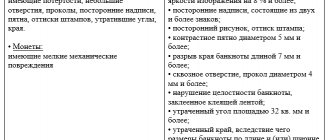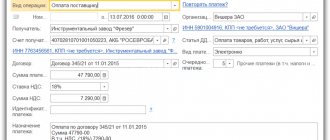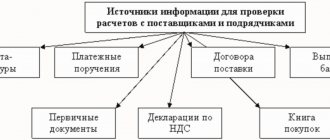The concepts of “credit” and “loan”
Accounting for loans and borrowings in accounting is regulated by PBU 15/2008. The accountant should periodically recheck the document, since changes made to it entail adjustments to accounting. It is important to understand the difference between the concepts of “credit” and “loan”. A loan can only be issued by a specialized organization that has a license for this type of activity, for example, a bank (clause 1 of Article 819 of the Civil Code of the Russian Federation). It is issued only in cash and only at interest. The loan can be issued by any organization, individual entrepreneur or individual. There are no restrictions on the form of issuance for it: it can be either monetary or real. He may not have interest for use.
Accounting for a loan between companies
When issued, the loan must be taken into account and reflected in accounting in the column of financial investments. However, to do this, several requirements must be met:
- An agreement must be drawn up granting the right to make financial investments.
- Companies must cover all risks that are in one way or another associated with borrowed funds.
- The company must guarantee income in the future, which will prove the extreme need for borrowed funds.
This regulation is established by 2PBU 19/02. Thus, financial investments display exclusively loans with interest, regardless of the form in which they were issued: monetary, material, etc. Direct provision must be documented by posting, taking into account the nature in which the funds were issued.
In cases where the loan is interest-free, it is not reflected in financial investments, since it cannot be considered as such. The reason is that in this case the loan cannot be considered a financial investment, since it does not bring financial benefit. So, a loan that does not have interest is accounted for in account 76, and the posting for it is: debit 76 - credit 51.
Let's also consider the amount of interest-bearing and interest-free loans. In both cases, the entity relies on the value of assets that have either already been transferred or are planned to be transferred. The value in this case is represented as a consequence of the price, according to which - taking into account similar circumstances - the value of similar assets will be determined.
Short-term and long-term loans
Accounting for loans in accounting depends on the time of use by the borrower. To make payments on short-term loans (issued for a period of up to 1 year), account 66 is used. For long-term loans (issued for a period of more than 1 year), account 67 is used. If it happens that long-term loans are repaid in less than 365 days, then they must be transferred to score 66.
Accounting for loans in accounting should be divided into analytics:
- by type of funds received;
- by sources of funds;
- for basic and additional costs.
We issue an interest-free loan
When issuing an interest-free loan, the lender does not create entries for accounting for financial investments. After all, interest-free provision of valuables cannot be a financial investment, since it does not generate income (clause 2 of PBU 19/02).
Consequently, to account for interest-free loans, the lender uses not account 58 “Financial investments”, but account 76 “Settlements with various debtors and creditors”.
If an interest-free loan is issued to an employee, then account 73 “Settlements with personnel for other operations” is used.
Let us present the basic accounting entries for an interest-free loan.
| Operation | Account debit | Account credit |
| Issued an interest-free loan to another organization | 76 | 51, 52, 10, 41, etc. |
| Issued an interest-free loan to an employee | 73 | 50, 51, etc. |
| Repayment of loans issued is reflected | 50, 51, 52, 10, 41, etc. | 76, 73 |
Let us remind you that when providing non-cash loans, the VAT payer must.
Regarding the income accounting method (accrual or cash), interest is calculated on loans issued. The choice of accounting account is also influenced by the period for which funds or assets are provided.
Postings on loans and borrowings
Costs are reflected as part of other expenses of the enterprise. If they were received for the investment activities of the enterprise, then the costs for them are included in the cost of the asset being created until the asset is put into operation (this condition does not apply to small businesses on the simplified tax system).
Loan entries in this article imply loan entries, since commercial organizations, as already mentioned, cannot issue loans.
It is necessary to create subaccounts for accounts 66 and 67 to account for the amount of principal and interest debt. For example, to account for the principal debt, use account 66-1 (67-1); to account for interest debt, use account 66-2 (67-2).
Credit received, posting:
- Debit 51, 50, 41, 08, 10 Credit 66-1, 67-1 - loan received (long-term loan, transactions);
- Debit 91-2 Credit 66-2, 67-2 - the amounts of basic costs are included in operating expenses;
- Debit 67-1 Credit 66-1 - long-term loan transferred to short-term;
- Debit 91-2 Credit 60, 76 - the amounts of additional costs are taken into account;
- Debit 60, 76 Credit 51 - additional costs paid.
Loan repaid, posting:
- Debit 66-1, 67-1 Credit 51, 50, 41, 08, 10 - loan repaid (loan repayment, posting);
- Debit 66-2, 67-2 Credit 51 - interest on loans repaid.
Regulations PBU 15/2008 do not contain precise instructions on what date must be indicated when reflecting debt. Typically, accountants use the date the contract was signed or the date the loan was actually received. Both options are correct. When receiving a loan in kind, there is no difference from a tax point of view. But some nuances are worth noting.
Lender's accounting
Loans issued by an organization are financial investments.
Accounting for issued loans is kept on account 58 “Financial investments”. Loans provided are reflected in the debit of account 58 in correspondence with account 51 or other relevant accounts. The repayment of the loan is reflected by a reverse posting. For tax accounting purposes in accordance with clause 6 of Art. 271 of the Tax Code of the Russian Federation, interest receivable under loan agreements is recognized as income at the end of each reporting period (if the term of the agreement exceeds a quarter).
Debit 58 Credit 51 - Loan issued.
Quarterly (monthly)
Debit 58 Credit 91 - Interest due under the loan agreement has been accrued;
Debit 51 Credit 58 - Interest on the loan was received into the current account;
Debit 51 Credit 58 - Loan repayment reflected.
Features of a loan in kind
When receiving a loan in kind, an enterprise is forced to purchase consumables or fixed assets associated with the use of the loan received. They should be taken into account in the amount of actual costs without including VAT. When returning, the cost of the property must be calculated equal to the expenses at the time of purchase. Thus, there will be a price difference between the assets received and the assets reimbursed to the borrower.
The accountant must include this difference in other expenses or income:
- Debit 91-2 Credit 66, 67 - the price difference that arose as a result of an increase in the value of property was written off;
- Debit 66, 67 Credit 91-1 - the price difference resulting from a decrease in the value of the property is written off.
Typical accounting entries for loans issued
Under the cash method, interest is calculated on the day the funds are received:
- Debit 76 (73) Credit 91.1.
When accounting for interest using the accrual method, it is necessary to take into account the period for which the loan was issued under the agreement. If it exceeds one year, interest is accrued at the end of each month until the end of the time during which the agreement on the provision of funds is valid.
When issuing a loan for a period of less than a year, interest is taken into account on the last day on which it must be transferred to the lender.
If the loan is issued in non-monetary form, the interest received on it is subject to VAT:
- Debit 91.1 Credit 68 VAT.
Value added tax will be levied on the difference between the amount of interest received at the rate indicated in the agreement and calculated at the refinancing rate (8.25%).
Interest under a loan agreement can also be paid in property form:
- Debit 76 Credit 91.1.
In this case, you need to make entries for VAT accounting:
- Debit Credit 76.
Payment by property:
- Debit 41 (10,..) Credit 76.
When a loan agreement is concluded in foreign currency, and interest is paid in rubles, it is necessary. According to the accrual method, interest must be recalculated for an earlier event - payment or accrual of interest on the last day of the month.
- Debit 76 Credit 91.1 – reflection of the positive difference
- Debit 91.2 Credit 76 – reflection of the negative difference
In another situation, when interest is also received in foreign currency under an agreement in foreign currency, a recalculation into rubles is necessary at the Central Bank exchange rate either on the date of receipt or on the date of reflection in accounting (the earlier event is selected).
If the borrower fails to fulfill obligations, the contract provides for sanctions, which accrue interest for late payment of the loan. To do this, a separate sub-account “Settlements for penalties” is opened on account 76. Wiring:
- Debit 76 Credit 91.1.
An example of accounting for a loan received
Example 1
The organization received a loan on February 2 in the amount of RUB 1,500,000. Interest rate - 10%. The term of the loan agreement is 24 months. The monthly payment amount is RUB 62,500. The agreement with the bank provides for payment of interest and repayment of the loan amount monthly on the last day of each month. Interest accrues from the next day after receiving the loan.
In February, the organization will make the following transactions:
February 2
Dt 51 Kt 67.1 - a loan was received to the organization’s current account in the amount of RUB 1,500,000.
28th of February
Dt 91.2 Kt 67.2 - interest accrued on the loan: 1,500,000 / 365 × 26 × 10% = 10,684.93 rubles.
Dt 67.2 Kt 51 - payment of interest - 10,684.93 rubles.
Dt 67.1 Kt 51 - partial repayment of the loan - 62,500 rubles.
Postings in March:
March 31
Dt 91.2 Kt 67.2 - interest accrued on the loan: (1,500,000 – 62,500) / 365 × 31 × 10% = 12,208.90 rubles.
Dt 67.2 Kt 51 - payment of interest - 12,208.90 rubles.
Dt 67.1 Kt 51 - partial repayment of the loan - 62,500 rubles.
This loan, being long-term, will be reflected on line 1410 “Borrowed funds” of the balance sheet in the amount recorded in the credit balance of account 67.
If the loan were short-term, it should be reflected in line 1510 “Borrowed funds” of the balance sheet.
Commercial loans and commercial bills are shown by lines:
- 1450 “Other liabilities” (for long-term debt);
- 1520 “Accounts payable” (for short-term debt).
It should be noted that if funds were received for the purpose of acquiring, constructing or manufacturing an investment asset, interest must be reflected using account 08 “Investments in non-current assets” (Dt 08 Kt 66.2/67.2). An exception to this rule is made for business entities that keep records in a simplified way, which have the right to use account 91.2 for these purposes (clause 7 of PBU 15/2008).
All details of how the borrower reflects in the accounting records the receipt and repayment of a loan or credit are discussed in the Ready-made solution from ConsultantPlus.
For accounts payable accounting, see the article “How are accounts payable reflected in the accounts?”
How to reflect issued loans and borrowings in accounting?
Accounting for loans issued is regulated by PBU 19/02 “Accounting for financial investments”.
To reflect loans in accounting, the lender uses account 58 “Financial investments”.
Example 2
The organization issued a loan on March 1 for a period of 1 year. Loan amount - RUB 3,000,000. The interest rate on the loan is 15% per annum. In accordance with the terms of the agreement, the borrower pays interest for each day of use of the loan at the end of each month. Interest begins to accrue from the day following the day the loan is issued. The Agreement does not provide for partial repayment of the loan amount on a monthly basis.
In October the lender reflected:
March 1
Dt 58 Kt 51 - loan issuance - 3,000,000 rubles.
March 31
Dt 76 Kt 91.1 - interest accrued: 3,000,000 / 365 × 30 × 15% = 36,986.30 rubles.
Dt 51 Kt 76 - interest received from the borrower - RUB 36,986.30.
Postings in April:
April 30
Dt 76 Kt 91.1 - interest accrued for April: 3,000,000 / 365 × 30 × 15% = 36,986.30 rubles.
Dt 51 Kt 76 - interest received - RUB 36,986.30.
Postings in May:
May 31
Dt 76 Kt 91.1 - interest accrued: 3,000,000 /365 × 31 × 15% = 38,219.18 rubles.
Dt 51 Kt 76 - interest was credited to the current account - RUB 38,219.18.
...and so on until February 28 of the next year.
The lender will reflect the loan amount in the balance sheet on line 1170 “Financial investments” in the amount of RUB 3,000,000.







